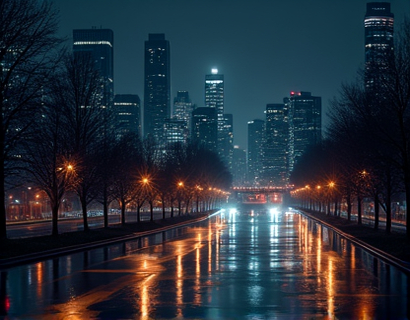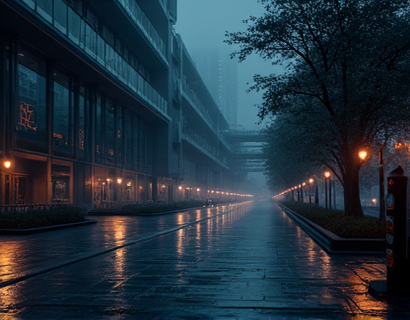Exploring the Ancient Indus Valley: A Comprehensive Travel Guide for Cultural Enthusiasts and History Buffs
The Indus Valley, a cradle of one of the world's oldest civilizations, beckons history enthusiasts and cultural explorers with its rich tapestry of ancient heritage and mysterious allure. This region, spanning parts of present-day Pakistan and northwestern India, was home to the Indus Valley Civilization, also known as the Harappan Civilization, which flourished around 2600 BCE to 1900 BCE. This guide serves as an ultimate companion for those seeking to delve deep into the cultural and historical significance of this ancient land, offering insights into its landmarks, practical travel tips, and hidden gems to make your journey unforgettable.
Historical Background and Significance
The Indus Valley Civilization is renowned for its advanced urban planning, sophisticated water management systems, and unique script that remains undeciphered. The cities of Harappa and Mohenjo-Daro, both located in present-day Pakistan, are the most extensively excavated sites and stand as testaments to the civilization's grandeur. These cities featured well-planned streets, advanced drainage systems, and public baths, indicating a high level of social organization and engineering prowess. The civilization's influence extended to trade, with evidence of maritime connections reaching as far as Mesopotamia and the Persian Gulf.
The decline of the Indus Valley Civilization is a subject of much debate among historians and archaeologists. Factors such as climate change, environmental degradation, and possible invasions have been proposed. Despite its decline, the legacy of the Indus Valley Civilization continues to fascinate scholars and travelers alike, offering a window into a sophisticated and enigmatic ancient culture.
Must-Visit Historical Landmarks
For those embarking on a journey to the Indus Valley, several key sites should be on your must-visit list. Mohenjo-Daro, one of the largest and best-preserved cities of the Indus Valley, offers a profound glimpse into the daily life and architecture of its ancient inhabitants. The Great Bath, a central public bathing facility, is a standout feature, showcasing the civilization's emphasis on cleanliness and ritual purity.
Harappa, another significant site, provides a comprehensive view of the urban layout and social structure of the Indus Valley Civilization. The site includes a granary, which suggests advanced agricultural practices, and numerous residential buildings that reveal the living conditions of its residents. The discovery of seals and artifacts here has provided valuable insights into the trade and economic systems of the time.
The Rakhigarhi archaeological site, though less visited, is one of the largest Harappan sites and offers a unique perspective on the civilization's rural aspects. The site is currently under excavation, and recent findings have the potential to rewrite parts of the history books. For a more serene and less crowded experience, Rakhigarhi is a hidden gem that should not be missed.
Cultural Heritage and Local Attractions
Beyond the major archaeological sites, the Indus Valley region is rich in cultural heritage and local attractions that provide a deeper understanding of the area's history and contemporary life. The city of Lahore, in Pakistan, is a vibrant hub of culture and history, with the Lahore Fort and the Badshahi Mosque being prominent landmarks. These Mughal-era structures, while not directly related to the Indus Valley Civilization, offer a continuity of the region's rich cultural tapestry.
The Cholistan Desert, spanning parts of Pakistan and India, is another fascinating destination. This arid landscape was once a lush region during the Indus Valley period. Today, it offers a stark contrast to the ancient urban centers, with its rugged beauty and nomadic tribes. Visiting a local village here can provide insights into traditional ways of life and the resilience of the people who have inhabited this region for millennia.
For a more spiritual experience, the town of Multan, known as the "City of Saints," is home to several historical mosques and shrines. The Data Ganj Baksh shrine, dedicated to a revered Sufi saint, is a significant religious site that reflects the syncretic nature of the region's spiritual heritage. The annual Urs festival, celebrating the saint's death anniversary, is a time when the city comes alive with devotional music and cultural performances.
Practical Travel Tips
Planning a trip to the Indus Valley requires some preparation to ensure a smooth and enriching experience. First, consider the best time to visit, which is typically from October to March, when the weather is mild and comfortable for exploration. Summer months can be extremely hot, while winters can be cool, especially in the evenings.
Travel documents are essential, particularly if you plan to visit both Pakistan and India. Ensure your passport is valid for at least six months beyond your planned departure date. Visas for Pakistan can be obtained online, while Indian visas may require a longer processing time and can be applied for through the nearest Indian embassy or consulate.
Transportation options vary, from domestic flights connecting major cities to buses and trains for more budget-friendly options. For a more personalized experience, hiring a local guide or joining a guided tour can provide valuable insights and ensure safety, especially in less touristy areas.
When visiting archaeological sites, dress modestly and respect local customs. Bring sunscreen, a hat, and plenty of water to stay hydrated, as the sun can be intense. Flashlights and sturdy shoes are also recommended for exploring ancient ruins.
Local Cuisine and Hospitality
The culinary journey through the Indus Valley is as enriching as its historical one. Local cuisine reflects the region's diverse cultural influences, with a blend of Mughlai, Punjabi, and Sindhi flavors. Must-try dishes include biryani, a fragrant rice dish cooked with spices and meat, and sambusaces, savory pastries filled with spiced meat or vegetables.
Street food is a delightful way to experience local flavors, with vendors offering everything from spicy street curries to sweet snacks like jalebi and gulab jamun. Dining at local restaurants, known as "eateries" or "cafes," provides an authentic experience and the chance to interact with friendly locals.
Hospitality is a cornerstone of the region's culture, and you will find that locals are warm and welcoming. Staying in locally-owned guesthouses or homestays can offer a more immersive experience, allowing you to connect with the community and gain a deeper understanding of daily life in the Indus Valley.
Conservation Efforts and Responsible Tourism
The preservation of the Indus Valley's archaeological sites is a ongoing challenge, with efforts underway to protect these ancient treasures for future generations. Visitors can play a crucial role in responsible tourism by adhering to site rules, avoiding touching or removing any artifacts, and supporting local conservation projects.
Several non-profit organizations and government bodies are dedicated to the preservation and research of the Indus Valley Civilization. Contributing to these initiatives, even through small donations or volunteer work, can make a significant impact. By being a conscientious traveler, you help ensure that the rich heritage of the Indus Valley continues to thrive.
Conclusion
The Indus Valley Civilization offers a profound and captivating journey into the heart of ancient history and culture. From the majestic ruins of Harappa and Mohenjo-Daro to the vibrant cities of Lahore and Multan, each destination provides a unique glimpse into a civilization that continues to intrigue and inspire. Whether you are a seasoned historian or a curious traveler, the Indus Valley promises an unforgettable experience that will leave you with a deeper appreciation of humanity's ancient achievements.










































